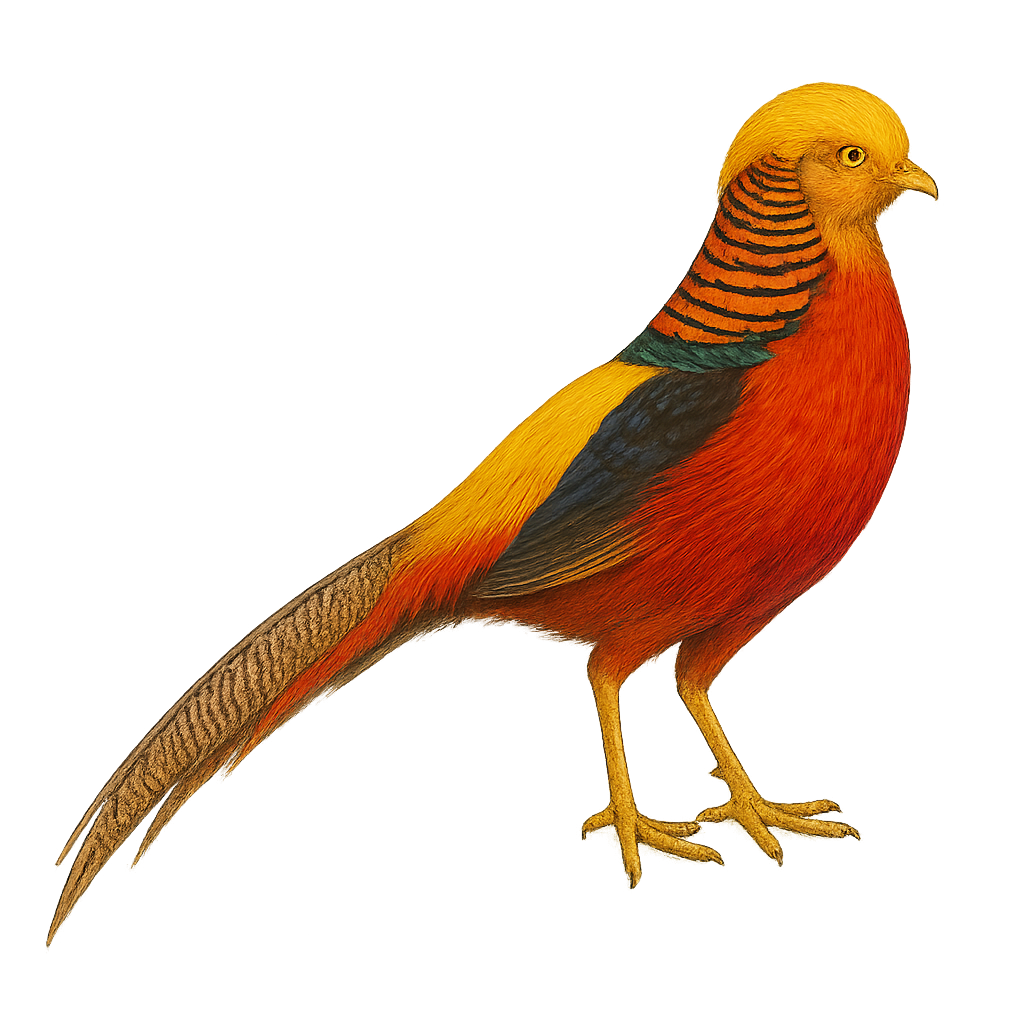Your wildlife photography guide.
Explore the golden pheasant in detail, study its behavior, prepare your shots.
Where to observe and photograph the golden pheasant in the wild
Learn where and when to spot the golden pheasant in the wild, how to identify the species based on distinctive features, and what natural environments it inhabits. The WildlifePhotographer app offers tailored photography tips that reflect the golden pheasant’s behavior, helping you capture better wildlife images. Explore the full species profile for key information including description, habitat, active periods, and approach techniques.
Golden Pheasant
Scientific name: Chrysolophus pictus

IUCN Status: Least Concern
Family: PHASIANIDAE
Group: Birds
Sensitivity to human approach: Suspicious
Minimum approach distance: 10 m
Courtship display: April to June
Incubation: 22-23 jours
Hatchings: April to July
Habitat:
forests, mountains, grasslands
Activity period :
Primarily active during the day, with peak activity in the morning and late afternoon.
Identification and description:
The Golden Pheasant, Chrysolophus pictus, is a stunning bird native to the mountainous forests of China. It is renowned for its vibrant plumage, particularly the male, which displays bright colors such as red, yellow, and blue. Its head is adorned with a golden crest that extends into a golden mantle on its back. Females, on the other hand, are more subdued with brown mottled plumage that allows them to blend into their natural habitat. These birds are primarily terrestrial, feeding on seeds, berries, and insects. Although they are capable of flight, they prefer to run to escape predators.
Recommended lens:
400 mm – adjust based on distance, desired framing (portrait or habitat), and approach conditions.
Photography tips:
To photograph the Golden Pheasant, it is advisable to use a telephoto lens of at least 400mm to capture the details of its plumage without disturbing it. Look for areas where they feed early in the morning or late in the afternoon when the light is soft and flattering. Be patient and discreet, as these birds can be suspicious. Use a tripod to stabilize your camera and wait for them to move into a well-lit area to get sharp and colorful images.
The WildlifePhotographer App is coming soon!
Be the first to explore the best nature spots, track rutting seasons, log your observations, and observe more wildlife.
Already 1 450 wildlife lovers subscribed worldwide

